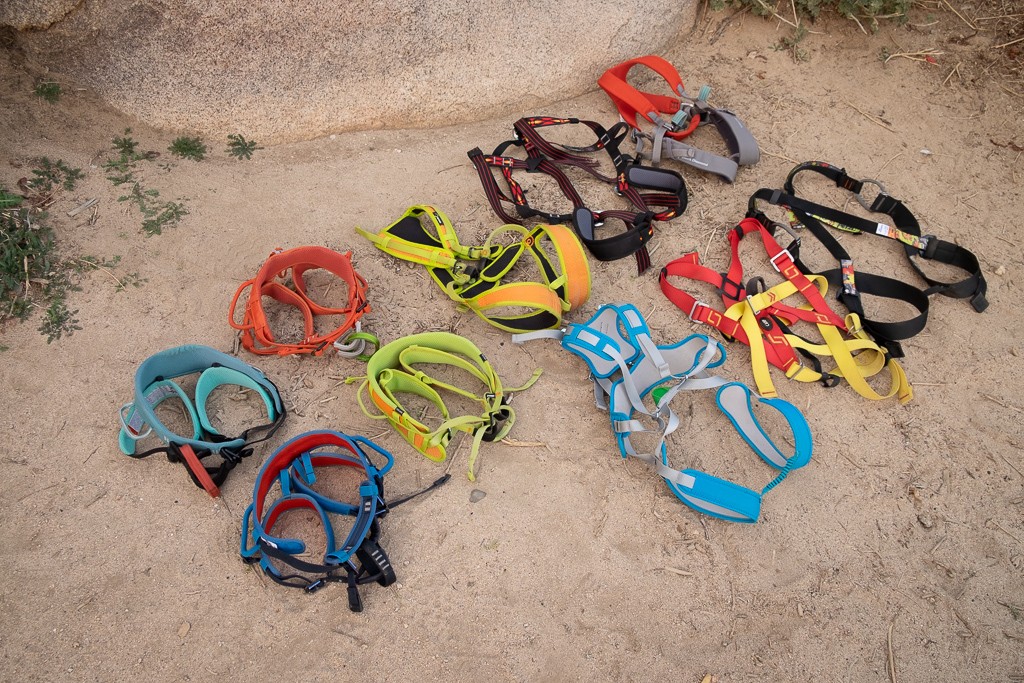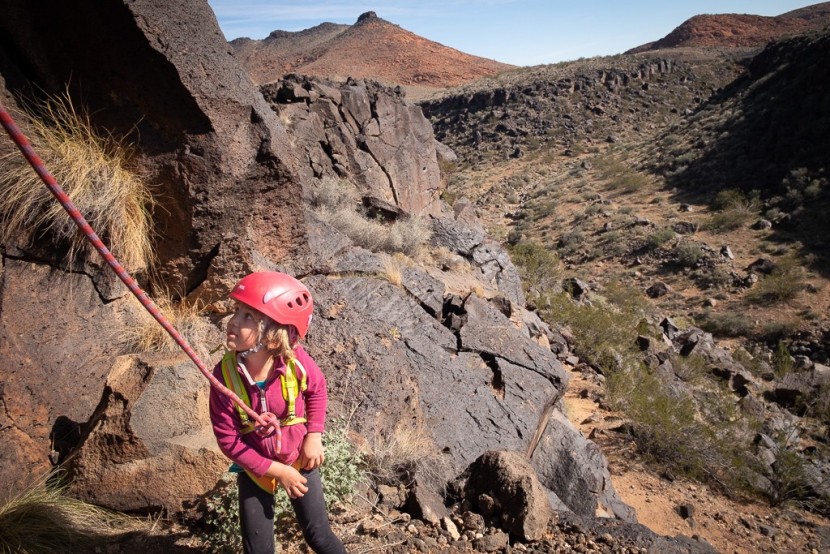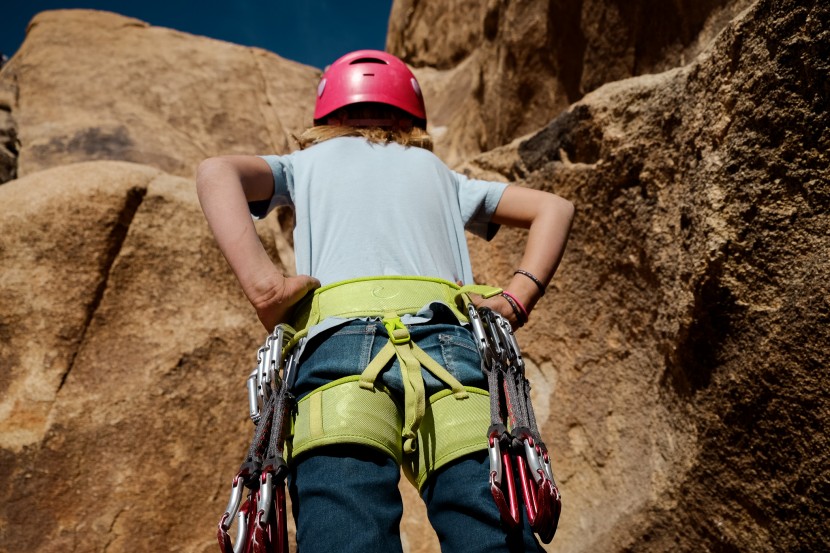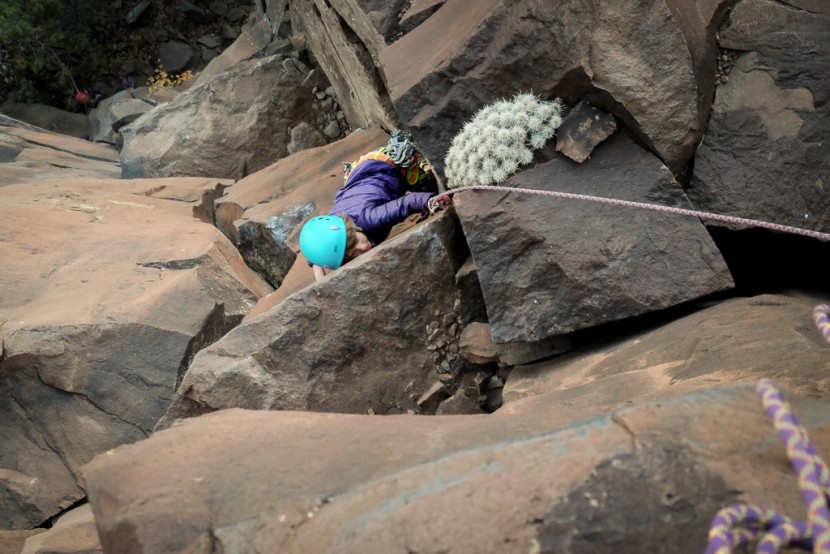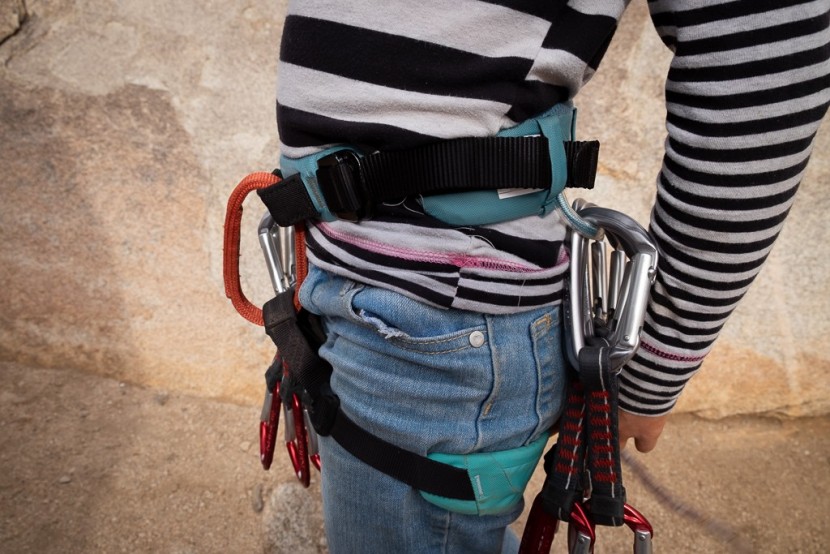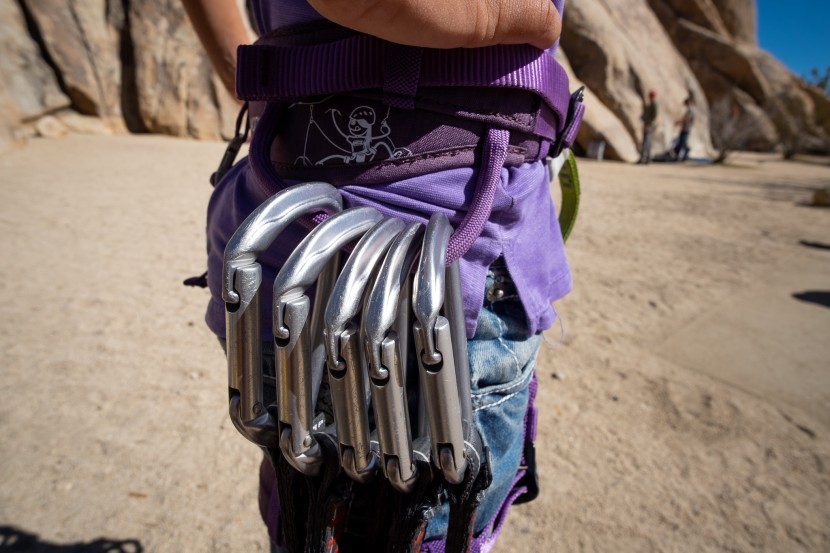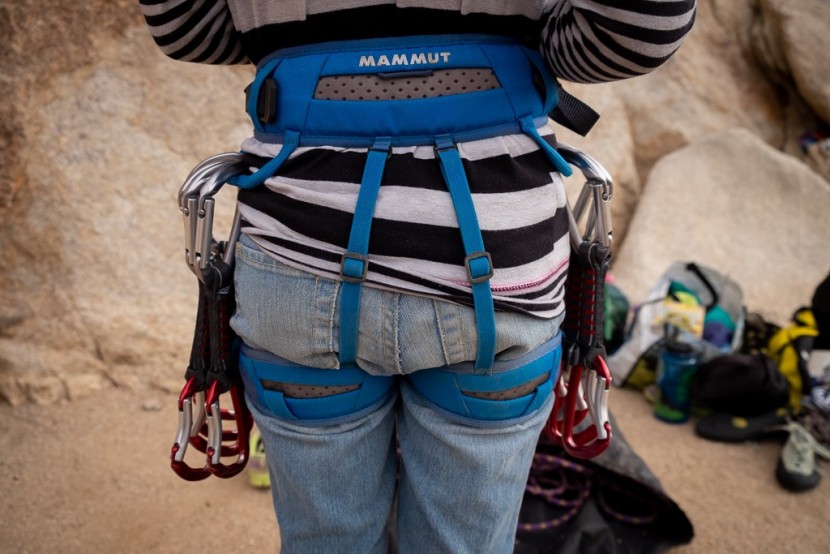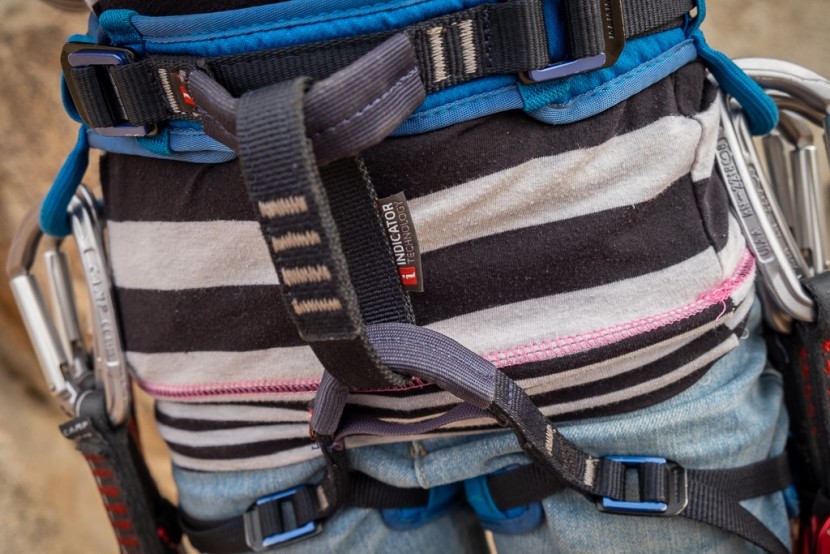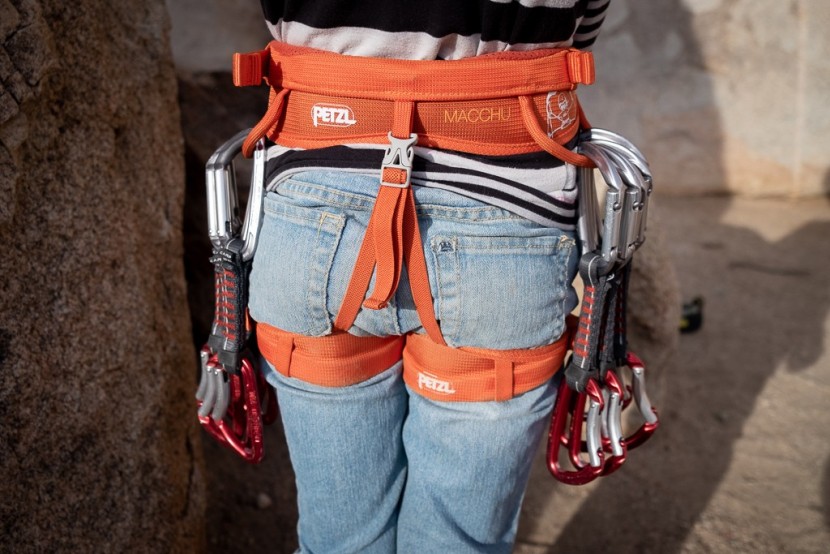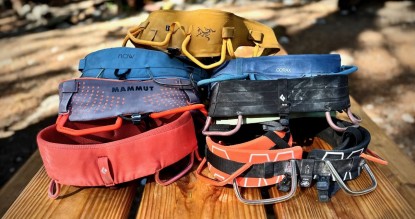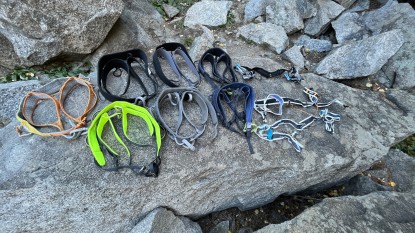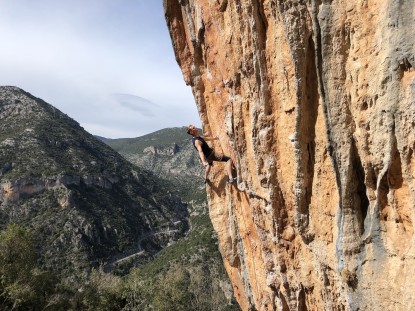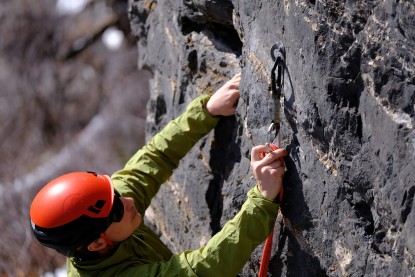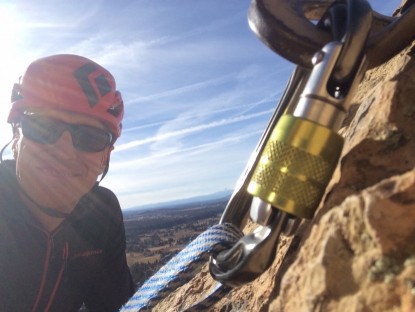When it comes to kids climbing harness selection, it's important to be able to ask yourself the right questions. This article will guide you through that process and help make sure that the kids are safe and comfortable while pursuing their climbing goals. A kid who feels safe and confident will find more enjoyment in the sport. Whether this is the child's first harness, or they are moving up from a full body to a sit harness, this article will guide you through the questions you must first ask yourself. The good news is, kids harnesses have come a long way in recent years, and now the kids can easily find one that will work well for their needs regardless of what that may be.
Harness Style
It is important to choose the right style harness for your climber. In our test, we feature both sit harnesses (only wraps around waist and legs) as well as full-body harnesses (covers from the waist up and over the shoulders). The size, age, and ability level of a climber will be what determines what type is best.
Full Body
Full-body harnesses work best for the smallest climbers (ages 5-10) who don't have strong enough core muscles to hold themselves upright when they rest back on the rope. The tie in points are located higher on the harness, around chest level, which makes becoming inverted in a fall virtually impossible. Another group that would benefit from a full-body harness would be those kids who may be a bit heavier with a slightly “rounder” midsection. It is imperative that the waist belt on a sit harness cinch down above the child's hips, and if you are unable to accomplish this with a sit harness, that's when a full-body version should be used. One thing to note, however, many of the full-body harnesses have a recommended weight limit, so keep that in mind for the larger children. Each harness will give specifics, but in most cases, the limit is somewhere around 65-80 pounds.
For years, kids full-body harnesses were made very basic, simply using some flat webbing and some buckles. Now with the growth of climbing and kids starting younger and younger, the offerings in this category have expanded to include harnesses with gear loops, padded leg loops, and secondary rear tie in point for specialized activities such as skiing or flying Peter Pan over the audience at the school play.
Sit Harnesses
When moving up into a sit harness, its important to not rush things. Make sure that the child is stable and comfortable near the ground before sending them up the wall. However, If you can get a good fit around their waist, and feel confident they can hang and lower without getting inverted, we would recommend moving into a sit harness. Sit harnesses generally have more features, are lighter, more comfortable, and make climbing easier. If your monkey is looking for a sit harness, chances are good that one of the fully-featured sit harnesses in our roundup will make a good match.
If the child is close to being ready for a sit harness, or you just want to play it safe, some manufacturers offer a chest harness, such as the Petzl Body comfort shoulder straps, that can be used in conjunction with a sit harness. This feature effectively turns any sit harness into a full-body harness assuring that junior stays upright.
What Type of Climbing??
There are so many kids out there climbing these days. We can no longer make assumptions about the type of climbers kids are. Some kids just climb for the chance to swing around on the ropes at the gym, while others kids are free climbing the Nose on El Cap (did that seriously happen?)… Many harnesses will work for a wide range of styles while others are more specialized. Determining what type of climbing they intend to do will help narrow down the search for the best seat in the house.
Top Rope Heroes
Almost every kid starts out top-roping in the gym. A top rope climb is one where the climber is attached to the end of a rope that is threaded through an “anchor” at the top of the wall which then goes down to a belayer on the ground. All of the harnesses tested work well for this style of climbing. Since this is the most basic type of rope climbing, the most important feature to look for would be comfort. A new climber will be more likely to enjoy themselves if they are able to hang in comfort.
Sport
Sport climbing is different than top roping in that the “lead climber” climbs, bringing the rope up with them while clipping it into fixed protection as they go. Not too many younger kids lead sport, but these days it is not uncommon to see older kids leading both indoor and outdoors. A good sport climbing harness will be a simple, lightweight, comfortable sit harness with large enough gear loops to hold the number of quickdraws necessary. As more and more young kids get into the sport, we are seeing more leading than ever before.
Trad
Now, in reality, we are talking about a small minority of kid climbers that climb trad. Trad (traditional) climbing is when you place and clip into removable equipment in cracks in the rock as you lead the climb. While it is true, there are not many trad climbing kiddos out there, it isn't uncommon for a kid to “follow” an adult, which requires them to take the gear out of the cracks and clip it onto their harness. Kids who follow (or lead) Trad will need gear loops large enough to accommodate all that gear. Unfortunately, kids sit harnesses are only available with two gear loops which will make organizing the gear on them a bit tight but for most climbs (especially cleaning single pitches), 2 will suffice. For older kids who are starting to lead trad, we would recommend moving up to an adult harness as soon as possible so they can have the extra gear loops needed for longer pitches or objectives like multi-pitch.
Getting a Good Fit
Generally speaking, children's harnesses have a lot of adjustability, ensuring a good fit, which is crucial, not only for safety but also for comfort. The Black Diamond Momentum Full Body - Kids was one of the only harnesses tested that didn't have adjustable leg loops. While that may be an issue for some kids, most will find it comfortable. In an ideal world, you could walk into a local shop and try them all on but since that's not always (or ever) possible, each individual review will describe our experience with comfort and fit.
A note on rise. Some sit harnesses have a lower rise than others. If a harness has a higher rise it's more likely they will hang more upright, while a harness with too low of a rise could pitch them back slightly forcing them to engage their core more. Since kids are all built differently, it's important to make sure there is adequate rise so it sits snugly over their hips and they can hang comfortably.
Features
With such a wide range of kid climbers, it should be no surprise that some harnesses are super simple and basic, while others are fully loaded miniature versions of the adult harnesses. These are some of the features that will help to narrow the field.
Gear Loops
Anyone who needs a place to put a belay device or to rack a set of quickdraws needs a set of gear loops. Luckily all the tested sit harnesses have decent gear loops. A good set should be rigid, stand off the harness a bit, and be easy to clip carabiners to. Ideally, they should sit centered on the waist belt, and since about half of the tested harnesses with gear loops also have dual adjust waist buckles, that's not an issue for most. If they plan to lead or follow trad or multi-pitch, you will want to seek out the harness that has the largest available gear loops. Gear loops do not make good chalk bag attachments, especially on little people where that would cause the chalk to dangle halfway down their legs and out of their reach… get a belt for that, they'll be much happier.
Leg Loops
Leg loops come in all types for kids. Some are simple flat webbing while others have perforated mesh padding. Some are a fixed length, while others (most) are adjustable (nice for accommodating cold-weather layers). Little climbers don't usually need too much extra padding because they generally come down after falling, but as they get older they will spend more time hanging in their harness, and a good pair of leg loops is priceless. It's important to find a harness that has comfortable leg loops if they plan to spend time working a route etc.
Belay Loop
If they would like to be able to eventually belay or rappel, they will need a harness with a belay loop. All of the sit harnesses featured in this review have belay loops. Having a belay loop makes the harness much more versatile for the budding climber/belayer. Some harnesses have red stitching or material, that once worn out, will start to show, indicating its time for retirement.
Ease of Use
For most kids, having a harness that is easy to put on, adjust, and remove is important. With the modern auto-lock sliding buckles, this would seem simple, but quite a few harnesses had adjustment buckles that were quite stiff and fiddly. Some full-body harnesses, once adjusted, can be easily slipped in and out of. On the flip side, some other kids, especially younger, more fidgety climbers need the buckles to be hard to access or adjust, so they don't mess with the adjustment unbeknownst to mom or dad. We cover the security of each one in the individual reviews.
Elastic Risers
Sit harnesses feature elastic risers to help keep the leg loops from sagging. Again a well-adjusted harness is a more comfortable harness. Some have adjustments; some don't. Some are easy to adjust, some aren't. Most designs, however, will be manageable and serve its intended purpose.

